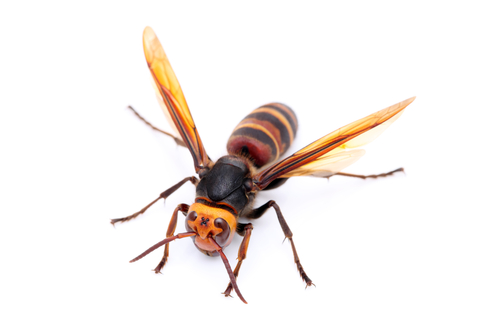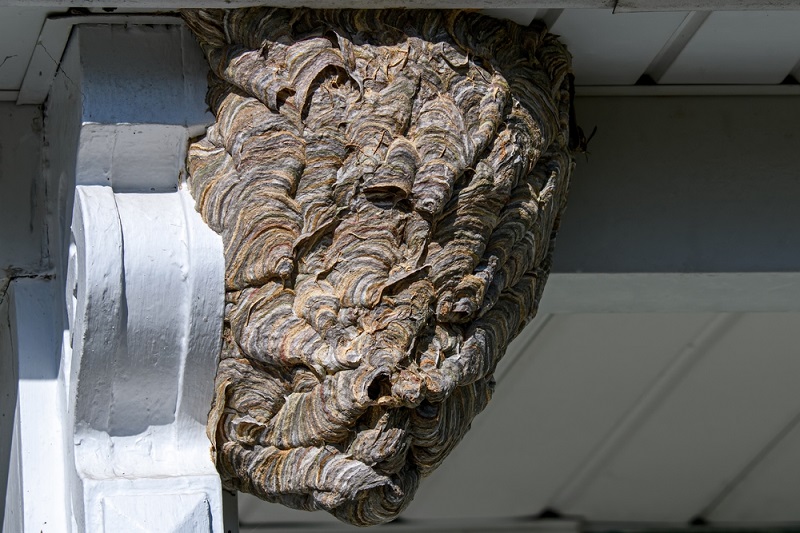
Identifying Hornets
European hornets are the only true hornet in the United States. They are brown with yellow-orange stripes and average an inch and a half in length. The bald-faced hornet is common in the US, but are actually more closely related to yellow jackets. These pests are black with white-gray stripes and much smaller than the European hornet, averaging just three-fourths of an inch long. They have six legs, two pairs of wings, and wide heads. Hornets stingers are not barbed, allowing them to sting multiple times.
Finding a Hornet Nest

Bald-faced hornets build their hives in trees and shrubs, whereas European hornets nest in tree and roof cavities, porch rafters, and beneath eaves. Hives are constructed by chewing wood into pulp and typically look like a teardrop in shape. One benefit of having hornets around is that they regulate pest populations by preying on flies, ticks, caterpillars, and other soft-bodied insects. For this reason, if a nest is located in a safe place far from homes, it is best left alone. People commonly think that hornets look like bees, but hornets have skinny waists between their thorax and abdomen.
Dangers & Removal
Hornets are aggressive pests, especially if their hives are disturbed. Their sting is painful and, since they swarm when bothered, it is rare to receive just one. Additionally, many people are allergic to their venom. Residents can do things like clean up dropped fruit and keep trash cans sealed tightly to deter hornet infestations. Caulking and sealing cracks in walls each spring to keep them from entering roofs and attics is also helpful. When it comes to identifying and removing an established hornet nest, homeowners should rely on the specialists at Critter Control.